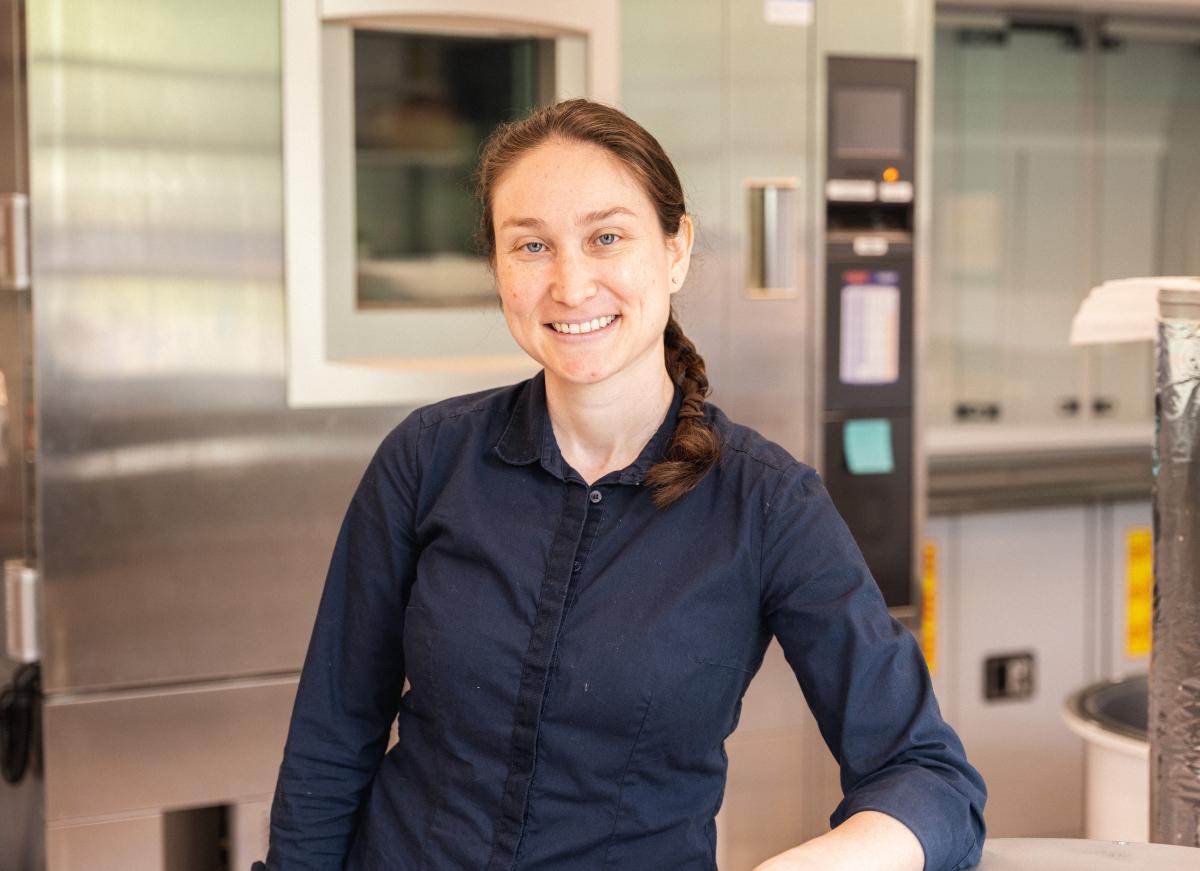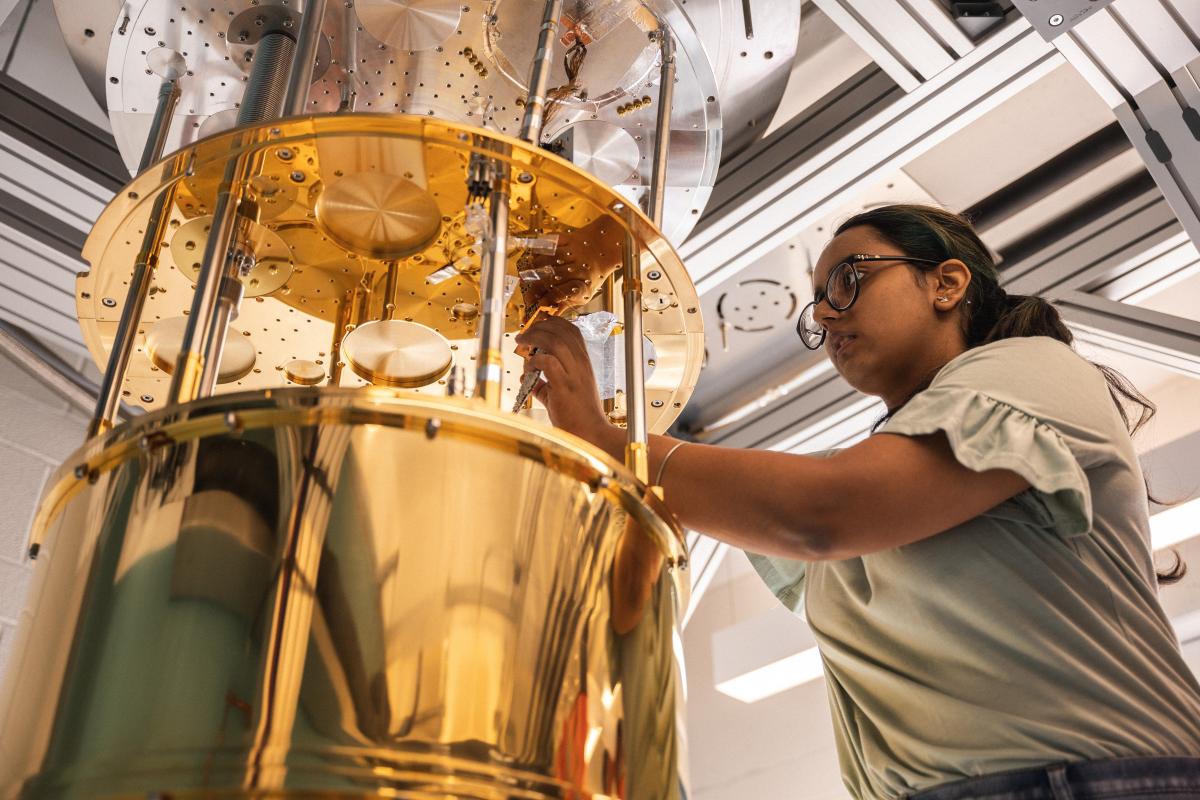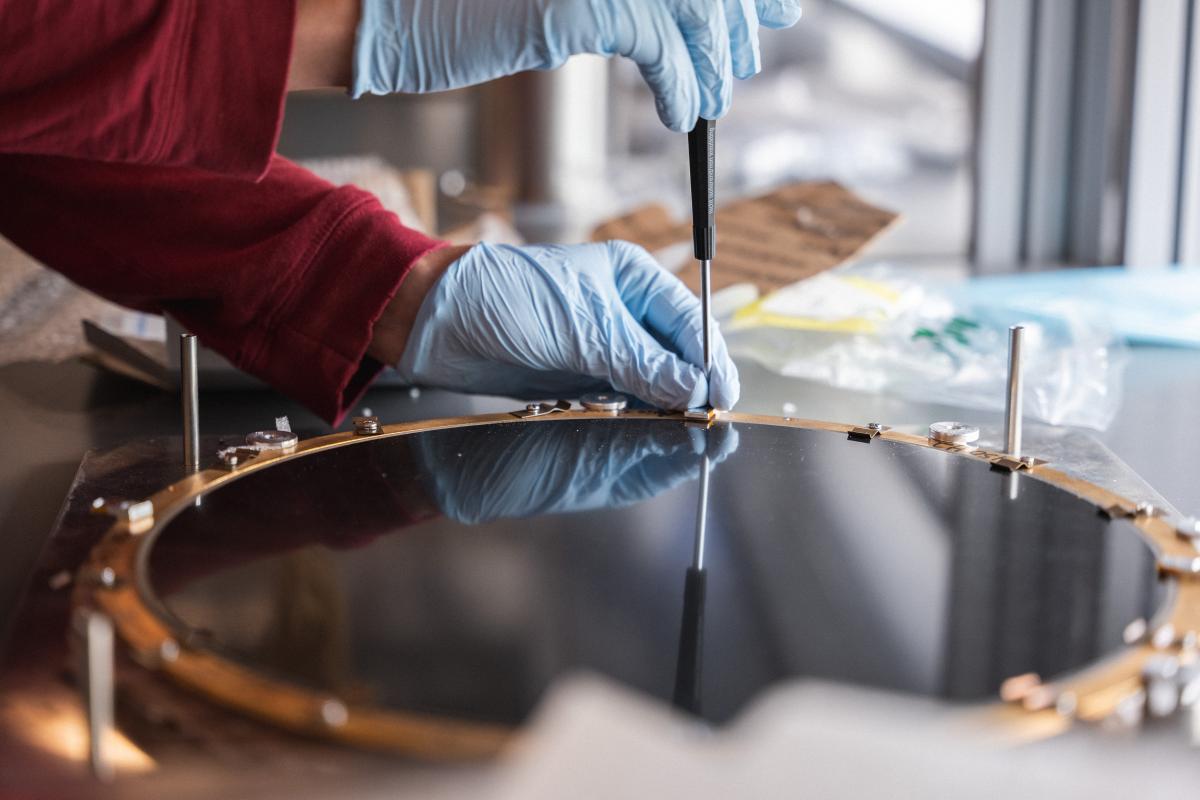With NASA's latest balloon technology, Johanna Nagy is looking 13 billion years into the past, using the oldest light in the universe, to precisely measure the polarization of the microwave sky.
What did the universe look like when the first stars formed? How heavy are notoriously difficult to detect neutrinos? To answer these questions, physicists must look nearly 13 billion years into the past and do so with enough precision to capture granular details about the cosmic microwave background (CMB) behind the familiar light and dust of our own Milky Way galaxy.

Johanna Nagy, assistant professor of physics in Arts & Sciences, aims to do just that. Nagy and collaborators at Princeton, the University of Illinois at Urbana-Champaign, Caltech, and NIST recently won a five-year grant from NASA's Astrophysics Research and Analysis (APRA) program to support their collaborative research project, known as Taurus. Taurus is a super-pressure balloon-borne telescope mission designed to map the polarization of the microwave sky. These measurements will allow physicists to examine what happened when the first stars formed by looking at photons that have been traveling for nearly 13 billion years – the oldest light in the universe.
The funding from NASA covers the full mission from design and construction through flight and analysis. Nagy and other scientists on her team at WashU will take on leading roles in many key areas of the Taurus mission, including optical development, cryogenic detector characterization, instrument calibration, payload deployment, and data analysis. This attention to various mission stages and how they work together has been a feature of Nagy's research program since her arrival at WashU.
“We’re looking at the polarization of the cosmic microwave background on the largest scales, and that can tell us about a period in the universe when the first stars formed,” Nagy said. “These first stars did what we call reionizing the universe, which means that there were suddenly free electrons around. Some of those electrons interacted with CMB photons, causing them to scatter. We know it’s a small fraction of photons that scattered, something like 5-10%, but we don’t know very precisely how many, and that’s what we’re trying to measure.”
This measurement, called the optical depth to reionization, is a key parameter in the current model of the universe, with implications for cosmology and fundamental physics, including the mass of neutrinos.

With seed funding from the McDonnell Center for the Space Sciences, Nagy and Henric Krawczynski, the Wayman Crow Professor of Physics, purchased a newly developed cryogenic refrigerator that will help them test their systems in preparation for the flight. Equipment on Taurus will be significantly colder than earlier missions – 100 millikelvin (mK) compared to 300 mK. Two hundred mK may not seem like a big difference, but for Nagy and her team it will mean achieving unprecedented sensitivity, allowing Taurus to make the most precise measurements of large-scale CMB polarization (or the optical depth to reionization) to date.
Earlier balloon missions launched from Antarctica to minimize thermal expansion and contraction caused by the day/night cycle, which leads to helium loss and has limited the time of past flights. Equipped with NASA’s latest super-pressure balloon technology, Taurus will be able to launch from New Zealand and stay airborne for up to 50 days. The mid-latitude launch location will also enable Taurus to see more of the sky during nighttime observations, about 70% compared to only 10% seen in earlier Antarctic-based missions. According to Nagy, that large swath of sky is critical to the mission’s scientific goals.

“We’re comparing small differences in polarization across as much of the sky as possible. Because we’re measuring statistical properties, there’s a fundamental limit on how well you can measure those statistics, and it’s related to how much of the sky you can see,” Nagy explained. “It’s similar to fields that deal with population statistics – the bigger the population you can sample, the better your results. This is basically the equivalent for the sky.”
Nagy and her team are designing and building sensitive instruments to measure signals from our own galaxy very accurately and distinguish them from the microwave background, producing clean and robust data that will benefit an entire community of researchers working on the CMB. Along with other recently funded projects, this new mission contributes to WashU's reputation as a global leader in suborbital astrophysics.
“I’m excited to be building the next-generation instrument and bringing new group members into this project,” Nagy said. “Doing all this in the context of the other ballooning projects at WashU means we have a lot of experience, expertise, and support just down the hallway. There’s a lot of incredibly productive synergy across physics and the McDonnell Center for the Space Sciences.”




